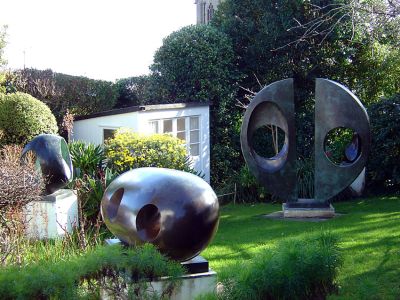
The Barbara Hepworth Museum and Sculpture Garden offer a unique insight into the work of one of the most important 20th century artists. There are sculptures in bronze, stone and wood on display, both in the museum and in the sub-tropical garden, along with paintings, drawings and other archive material.
Hepworth was born in Wakefield in 1903 and studied at the Leeds School of Art. In 1939, she settled in St Ives, she built her studio. Trewyn Studios, which are now the Hepworth Museum, are where the artist lived and worked between 1949 and 1975, when she was tragically killed in a studio fire. She created many of her most famous works here and the subtropical garden was an essential part of her creative process.
Barbara Hepworth was an important figure in the abstract art movement. Her creations drew on both geometric and organic shapes. In England, it was Hepworth who introduced the idea of piercing solid sculpture with a hole to give the object transparency. This influenced her friend, Henry Moore, amongst others. Hepworth, like Moore, created sculptures derived from nature. She was inspired by the countryside around St Ives and particularly by the sea-sculpted rocks around the Cornish coast.
The museum and garden opened to the public in 1976, following the artist's wishes, as a permanent setting in which to exhibit her works. Since 1980 the Tate has managed both studio and garden. Many of the sculptures contained within the garden were her personal favourites.
The many steps and uneven surfaces at the Barbara Hepworth Museum and Sculpture Garden make wheelchair access difficult and only by prior appointment.
There are various other facilities available at the museum and joint tickets may be purchased for this museum and the Tate Gallery, St Ives.





